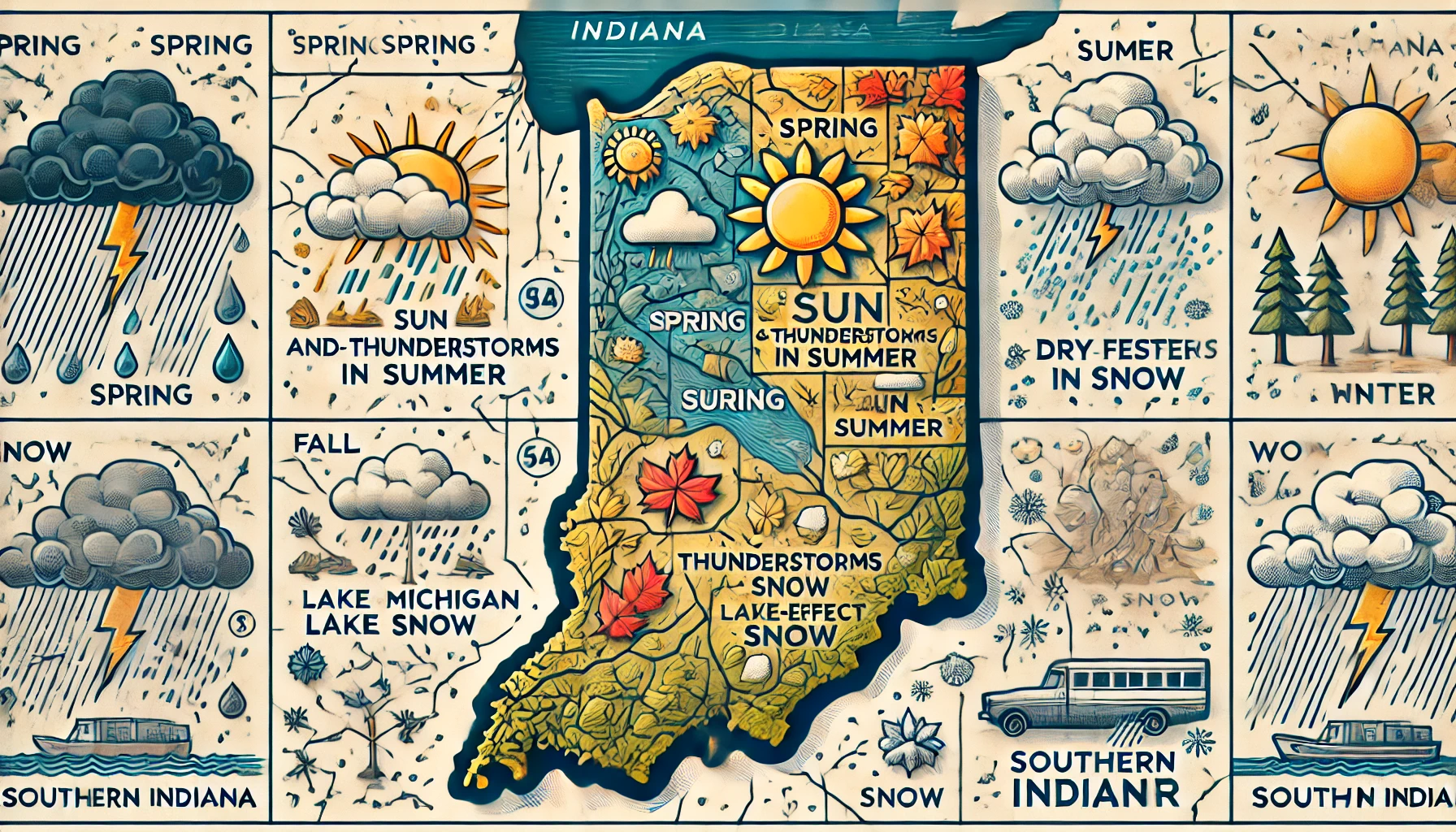Indiana, with its diverse climate, offers a fascinating case study of precipitation patterns. This blog post aims to explore what are the precipitation patterns in Indiana, providing a comprehensive understanding of the various factors influencing rainfall and snowfall across the state. Whether you’re a weather enthusiast or simply curious about Indiana’s climate, this detailed exploration will give you valuable insights.
Understanding Precipitation Patterns
The Basics of Precipitation
Precipitation includes all forms of water, liquid or solid, that fall from clouds and reach the ground. In Indiana, this primarily means rain, snow, sleet, and hail. The state experiences a humid continental climate, characterized by significant seasonal temperature differences and ample precipitation.
What Are the Precipitation Patterns in Indiana?
Indiana’s precipitation patterns are influenced by its geographical location, prevailing winds, and regional topography. The state lies in the Midwest, where it is subject to both continental and maritime weather influences. This results in a varied precipitation regime throughout the year.
Seasonal Precipitation Variations
Spring: A Season of Renewal
Spring in Indiana is marked by increasing temperatures and frequent rainfall. As the state transitions from winter to summer, the clash of warm and cold air masses often leads to thunderstorms, especially in May and June. This period is crucial for agricultural activities, as the rainfall supports crop growth.
Summer: Warm and Wet
Summers in Indiana are typically warm and humid, with frequent afternoon thunderstorms. July is usually the wettest month, with the state receiving the bulk of its annual precipitation. The thunderstorms during this season can be intense, sometimes accompanied by hail and strong winds.
Fall: A Time of Change
Fall sees a gradual decrease in temperature and precipitation. September and October are generally drier months, providing a respite from the summer’s humidity. However, the state can still experience occasional rain showers, influenced by the remnants of tropical storms and hurricanes moving inland.
Winter: Cold and Snowy
Winter in Indiana brings cold temperatures and snowfall, particularly in the northern parts of the state. Lake-effect snow is a significant factor for areas near Lake Michigan, contributing to higher snowfall totals. Southern Indiana, on the other hand, may see more rain than snow due to milder temperatures.
Factors Influencing Precipitation
Geographic Location
Indiana’s location in the Midwest exposes it to various air masses, including cold, dry air from Canada and warm, moist air from the Gulf of Mexico. These contrasting air masses often converge over the state, leading to diverse precipitation types and amounts.
Topography
While Indiana’s topography is relatively flat, the presence of small hills and valleys can influence local precipitation patterns. For instance, areas near Lake Michigan often experience more snow due to the lake-effect phenomenon, where cold air passes over the warmer lake water, picking up moisture and depositing it as snow on the downwind shores.
Prevailing Winds
The prevailing westerly winds play a crucial role in Indiana’s weather patterns. These winds can bring moist air from the Pacific Ocean, contributing to precipitation when they encounter colder air masses. Additionally, the westerlies can steer storm systems into the region, affecting local weather conditions.
Long-Term Trends and Climate Change
Historical Data
Historical weather data shows that Indiana has seen significant fluctuations in precipitation over the decades. While some years have been particularly wet, others have experienced drought conditions. Understanding these patterns is essential for planning and managing water resources in the state.
Impact of Climate Change
Climate change is expected to alter Indiana’s precipitation patterns, with projections indicating increased rainfall intensity and frequency of extreme weather events. This could lead to more flooding, especially in urban areas with inadequate drainage systems. Additionally, warmer winters may result in less snowfall and more winter rain.
Conclusion
In summary, what are the precipitation patterns in Indiana is a question that encompasses a range of factors, from seasonal variations to long-term climate trends. Indiana’s diverse climate ensures a mix of rain, snow, and thunderstorms throughout the year, influenced by its geographic location and prevailing winds. As climate change continues to impact weather patterns, understanding these changes is crucial for adapting to future conditions.
By grasping the precipitation patterns in Indiana, residents and policymakers can make informed decisions about agriculture, water management, and infrastructure planning. Stay tuned to Weather Indiana for more insights and updates on your local weather.
What are the Precipitation Patterns in Indiana
Understanding what are the precipitation patterns in Indiana is crucial for residents and businesses alike. Indiana experiences a humid continental climate, with significant variations in rainfall and snowfall throughout the year. From spring thunderstorms that boost agricultural productivity to winter snowfalls influenced by lake-effect phenomena, the state’s precipitation patterns are diverse and dynamic. Climate change is expected to further influence these patterns, leading to increased rainfall intensity and more frequent extreme weather events. Staying informed about these trends helps in better planning and preparedness.

